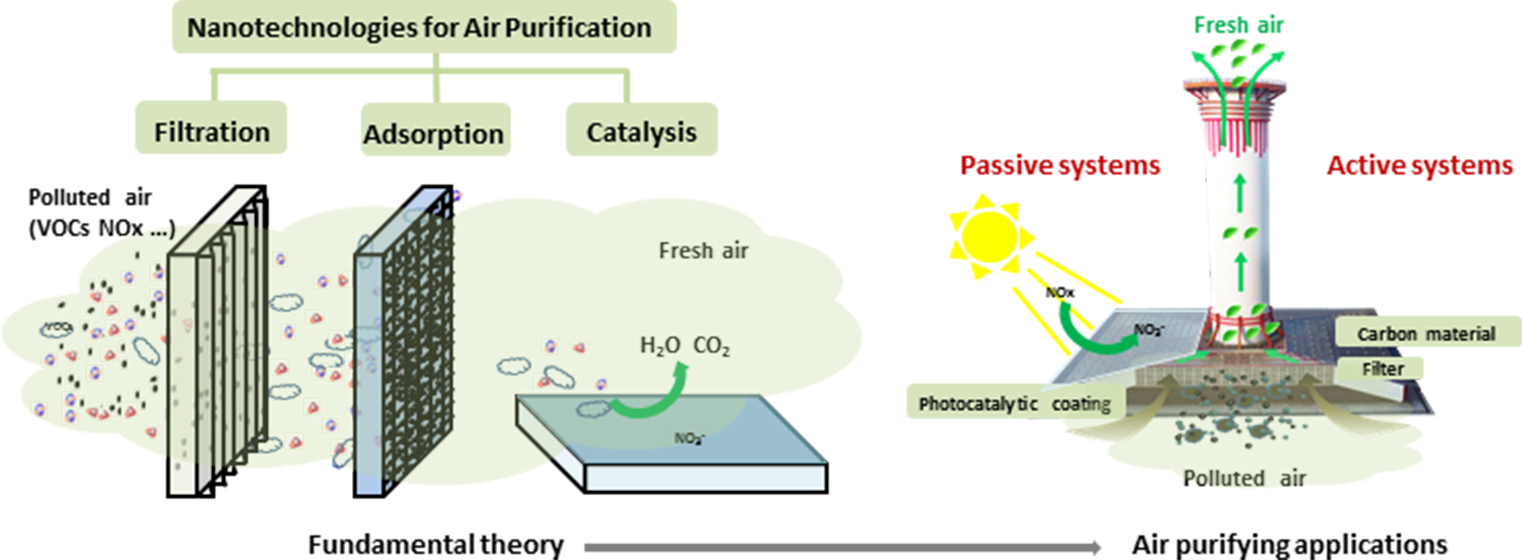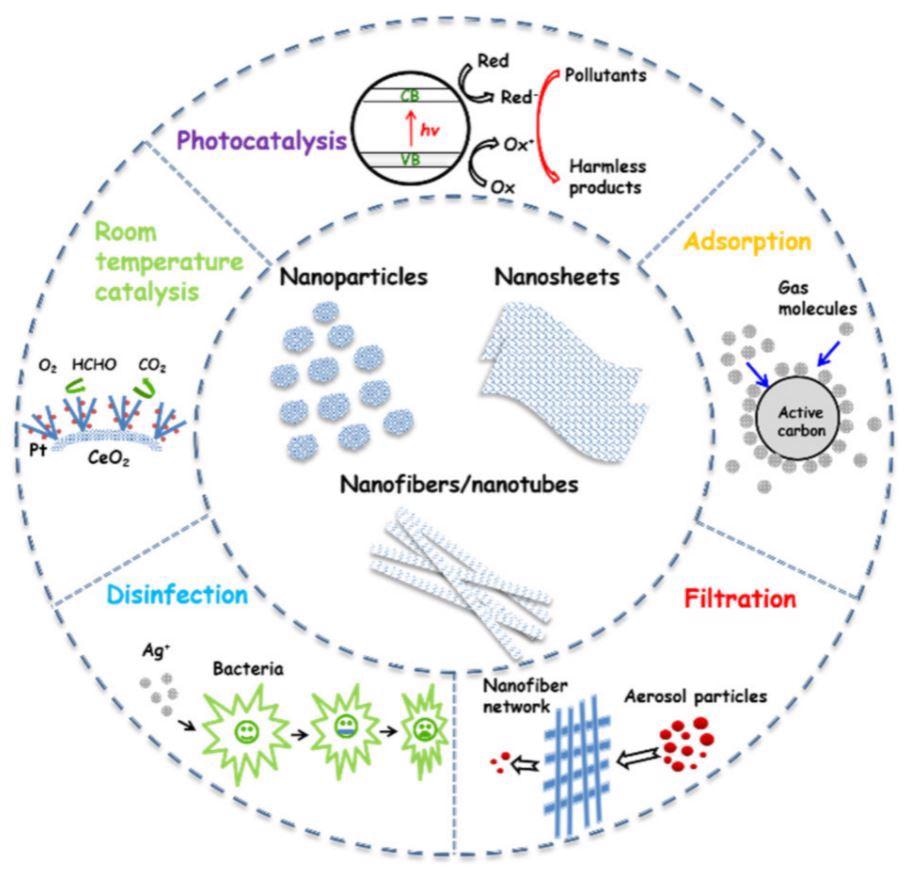Researchers from China have proposed novel nanotechnology materials that successfully eliminate VOCs, along with sulfur and nitrogen oxides, from the air at ambient temperature. Their work is reported as a review article in the MDPI journal Catalysts. Dust clearance, denitrification, and desulfurization are traditional ways of reducing emissions from constant fuel combustion.

Study: Ambient Air Purification by Nanotechnologies: From Theory to Application. Image Credit: LuckyStep/Shutterstock.com
However, they haven't resulted in a reduction in air pollution episodes. Recent breakthroughs in nanotechnology and nanomaterials have opened up new possibilities for eliminating tiny particles and gaseous contaminants from the surrounding air and lowering associated health risks.
Additional health consequences of pollutant emissions include higher cardiac and respiratory illness occurrences, as evidenced by various toxicological investigations.

To alleviate the excessive PM concentrations in metropolitan centers, chemical investigations of PM2.5 and sources identification studies have demonstrated emission restrictions for volatile organic compounds (VOCs), sulfur and nitrogen oxides (SOx and NOx) from the combustion of coal, fuel combustion, and automobiles are required.
While atmospheric PM2.5 levels are too high, the circulation of outside air might have a detrimental influence on air quality. For example, anaerobic decomposition from furniture, paintings, carpets, building materials, and textiles, especially in modern or recently remodeled residences with inadequate ventilation, can significantly impact air quality.
Recent technological advances in nanotechnology have opened up incredible possibilities for using nanomaterials for pollutants removal. Nanomaterials offer greater surface areas and exhibit substantially different magnetic, electrical, and catalytic characteristics for particulate matter 100 nm, making them preferable for purification, adsorption, filtration, and photocatalysis when compared to larger particles.
Nanomaterials are now being utilized in particle filtering, gas absorption, bacteria sterilization, and catalytic procedures. They've been used in various purifying devices to minimize particulate matter or PM, gases precursors, and other contaminants such as VOC and NOx.
Contrary to typical multilayered air filters, Electrospun nanofibrous air filters have a high surface area and porosity with a micrometer in diameter void spaces, leading to decreased pressure and airflow resistance. These materials do not require high-capacity pumps.
Filtering performance is influenced by filtration efficiency as well as pressure drop. Optimizing the filtration effectiveness of nanofibers by enhancing the polarities and surfaces electrostatic charges within the polymers used to create them is a typical strategy. Active components can be included in the polymers used to manufacture nanofibers to offer a variety of specific capabilities.
In another research, a triboelectric nanogenerator was integrated into a self-powered air filter comprised of electrospun polymer with stainless-steel coated wires. When paired with a photocatalysts active ingredient, this type of device demonstrated outstanding results in terms of PM2.5 absorption and formaldehyde breakdown.
Facial masks and windows materials made of nanocomposites and nonwoven textiles have been created for real-world applications in order to safeguard public health by preventing outside PM2.5 from infiltrating inside areas.
The adsorption process is a non-destructive method for removing gaseous contaminants from the air within ambient settings. This can include two separate mechanisms: chemisorption (covalent) and physisorption (non-covalent).
Carbon materials in multiple forms seem to be the most often utilized adsorbent for VOC removal for VOC. On the other hand, graphene oxide may be synthesized into a variety of self-supporting structures or utilized as a metal substrate for dispersion catalysts that are designed to absorb and degrade VOCs at the same time.
Although developing air purification technology based on structural nanomaterials involves numerous practical hurdles, there seems to be a strong chance of meeting the end goals.
Insufficient mass transfer and a longer exposure time of contaminants on the surface of the photocatalyst can drastically limit the efficiency of passive APN devices. Incorporating a compressor or a fan in the device to drive air over the photocatalyst surface may solve these difficulties.
Nanotechnology provides a number of advantages, including favorable working conditions, minimal equipment setup, and cheap running expenses. The Chinese Central government is enacting more strict laws to control the emission of chemical reagents into the environment as VOC levels continue to rise.

Technologies used for ambient air purification by nanomaterials
Various state industry benchmarks, including wood and interior wall treatment, building, and automobile painting, have been designed to reduce pollution from petroleum exploitation and solvent usage. The methods whereby electrospun nanofibers collect PM have to be investigated further in order to produce effective and robust air filtration technologies.
Furthermore, APN innovation is frequently an excellent strategy to enhance the air quality in domestic and urban locations, and it is particularly well adapted to implementations in tight spaces. As a function of these benefits, the Chinese government is putting aside a lot of funds for the development of nanomaterials with APN technologies for pollution prevention, and APN will definitely receive increasing attention near in the future.
Journal Reference:
Cao, J.-j.; Huang, Y.; Zhang, Q. Ambient Air Purification by Nanotechnologies: From Theory to Application. Catalysts 2021, 11, 1276. doi.org/10.3390/catal11111276.
Disclaimer: The views expressed here are those of the author expressed in their private capacity and do not necessarily represent the views of AZoM.com Limited T/A AZoNetwork the owner and operator of this website. This disclaimer forms part of the Terms and conditions of use of this website.